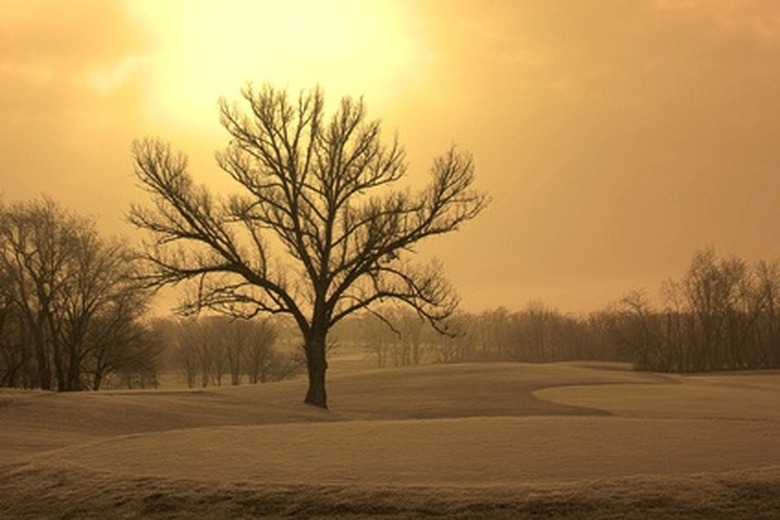How To Kill Tree Mold
Trees are not the towering, indestructible objects that they appear to be. They can be damaged by all sorts of things such as weather, drought, animals, insects and mold. Mold growth on trees shows up on the leaves as spots or a powdery film. It doesn't always mean the tree will die, but it can happen. Removing the mold is the best way to prevent further damage.
Step 1
Spray the tree with a sulfur-based treatment to kill mold and mildew such as powdery mildew. Mix the sulfur at a rate of 2 tsp. per gallon of water. Do not use this on walnut trees.
- Trees are not the towering, indestructible objects that they appear to be.
- Mold growth on trees shows up on the leaves as spots or a powdery film.
Step 2
Spray water on trees that are developing a mold due to insects that leave a residue in their path. An example might be aphids. The mold itself will be taken care of when the sticky residue is worn off by weather or eaten by the insects. To keep it from coming back, you need to get rid of the insects by knocking them out of the tree. For bad infestations use an insecticide. The water can sometimes remove the mold itself as well.
Step 3
Mix 1-part bleach to 10 parts water to spray the tree mold. Adding bleach to the water will increase the chances of removing the mold. The bleach will help kill and loosen the mold's hold on the leaves.
- Spray water on trees that are developing a mold due to insects that leave a residue in their path.
- Adding bleach to the water will increase the chances of removing the mold.
Step 4
Cut out sections of branches with more serious mold that doesn't respond to sprays. This will remove the mold from the tree and keep it from spreading. Also, remove fallen leaves from around the tree so that they do not spread the mold.
Kill Mold On Orange Tree Limbs
Fill a garden sprayer with 1 of gallon water and 1 teaspoon of liquid dish detergent. Wait 1 week and check the treated limbs to see if any damage from the detergent appears. If no damage appears, it is safe to use the liquid detergent solution.
Things Needed
- Bleach
- Insecticide
- Sprayer
- Sulfur-based treatment
References
- North Dakota State University Extension: Deciduous Tree Diseases
- Ohio State University Extension: Sooty Molds on Trees and Shrubs
- University of California Agricultural and Natural Resources: Sooty Mold
- The Old Farmer's Almanac: Lemons and Oranges
- Ohio State University: Sooty Molds on Trees and Shrubs
